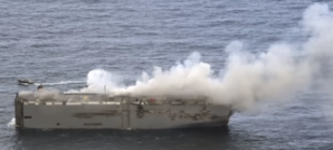tonybvi
Full Member
- Messages
- 1,169
Point number 1: it is not confirmed that it was an EV that caused the current ferry fire in Dutch water. In fact the Dutch Coastguard have stated that the cause of the fire is unknown and that it cannot at the moment be attributed to one of the 25 EV‘s aboard (Amongst more than a thousand or so ICE vehicles)
Point number 2: the Danish authorities have just completed a study on EV fires. The conclusion is that a) an ICE vehicle is much more likely to catch fire than an EV but that b) an EV fire is much harder to extinguish than an ICE fire. The best methodology so far if it is an EV fire is water mist, not to extinguish the EV fire but to control the spread of fire.
So please let us not all jump to conclusions about the inherent safety, or otherwise of EV’s, until the facts of individual fires are confirmed (if they can be).
Point number 2: the Danish authorities have just completed a study on EV fires. The conclusion is that a) an ICE vehicle is much more likely to catch fire than an EV but that b) an EV fire is much harder to extinguish than an ICE fire. The best methodology so far if it is an EV fire is water mist, not to extinguish the EV fire but to control the spread of fire.
So please let us not all jump to conclusions about the inherent safety, or otherwise of EV’s, until the facts of individual fires are confirmed (if they can be).
Last edited:



